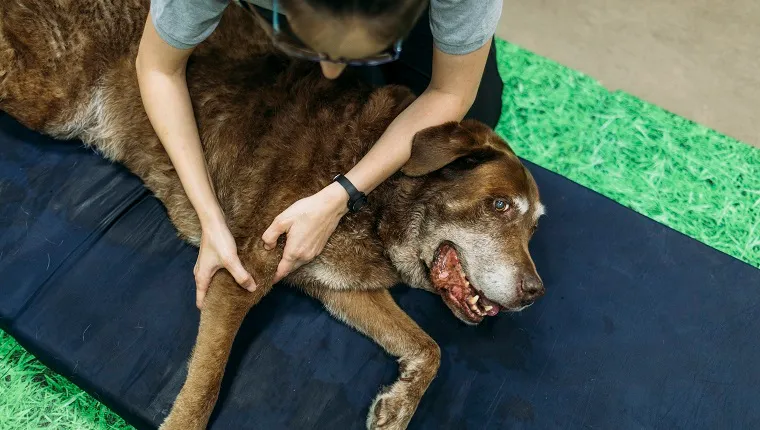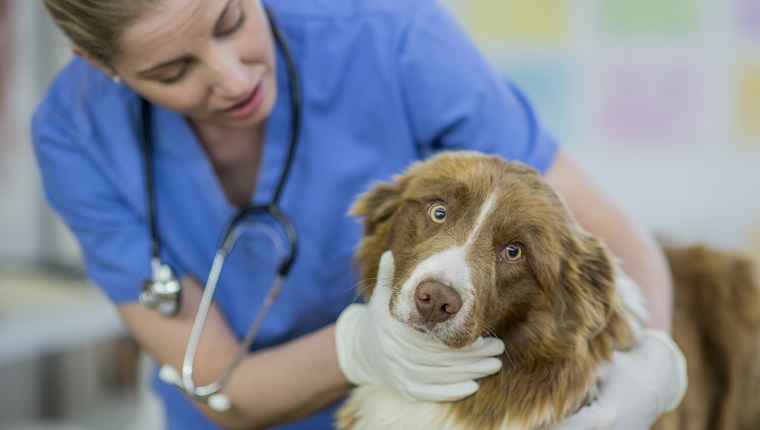Fibrosarcoma in dogs occurs when malignant tumors, caused by fibroblast cells, are able to develop and grow at an uncontrolled rate. It most often affects the trunk of a dog’s body along with their limbs.
The precise cause of this condition has not yet been confirmed, but larger breeds of dog and older canines are most at risk.
If you see signs that your dog might be suffering from tumor growth, then you must consult your veterinarian for a proper diagnosis and course of treatment. Here’s what you should know about the symptoms, causes, and treatments of fibrosarcoma in dogs.
Symptoms Of Fibrosarcoma In Dogs
Fibrosarcoma in dogs can present a range of symptoms. Some of the most common symptoms include:
- Swollen areas of the affected body
- Lumps under the skin
- Bone fractures
- Not being able to walk
- Swollen face
Causes Of Fibrosarcoma In Dogs

The precise cause of fibrosarcoma in dogs is currently unknown. Some of the factors that have been speculated to be causes include:
- Genetic factors
- Environmental factors
- Radiation exposure
- Trauma
Additionally, larger dogs and older dogs often seem to develop these tumors most frequently. Some of the most common large breeds of dogs that suffer from the condition include:
- Golden Retriever
- Irish Wolfhound
- Gordon Setter
- Doberman Pinscher
Veterinary Treatments
If you suspect that your dog is developing fibrosarcoma, your veterinarian will ask a series of questions about their medical history, along with details about their lifestyle and any recent events that might have prompted the condition.
The vet will order blood and urine tests. They may also use X-rays when forming a diagnosis. Vets often use biopsies are often used to confirm the presence of malignant tumors.
When it comes to treatment, dogs often need surgery to remove parts of the affected area of the body. They may also require amputation of a limb.
When your dog recovers at home, your vet might prescribe a course of pain medication. As ever, if your vet prescribes your dog any medicine, it is vital that you stick to the precise dosage and frequency instructions, along with completing the full course of medication.
Dogs who are recovering should also limit their physical activity while keeping up a healthy diet.
Has your dog developed fibrosarcoma? What kind of treatment is your vet advising? Tell us all about it in the comments below.









